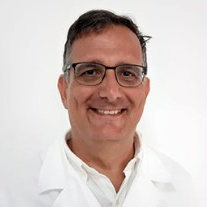Novel Challenges and Therapeutic Strategies for Ear, Nose and Throat (ENT) Diseases
A special issue of Journal of Personalized Medicine (ISSN 2075-4426). This special issue belongs to the section "Clinical Medicine, Cell, and Organism Physiology".
Deadline for manuscript submissions: 10 July 2024 | Viewed by 6991
Special Issue Editor
Interests: head and neck surgery; laryngology; head and neck cancer; nose and paranasal sinus surgery; head and neck oncology; otorhinolaryngology; personalized medicine; rhinology; OSAS
Special Issue Information
Dear Colleagues,
The purpose of this Special Issue is to offer readers and colleagues updates on Novel Challenges and Therapeutic Strategies for Ear, Nose and Throat (ENT) Diseases.
This Special Issue welcomes research articles and review papers focused on pathogenetic, diagnostic, and therapeutic perspectives in ear, nose and throat disease. Every year, we see continued advancement in the field of Otorhinolaryngology. The goal of this Special Issue is to keep us up to date on an ever-expanding field. We will include a number of topics that are pertinent for all aspects of challenges and therapeutic strategies in Otology, Rhinology, Laryngology and other ENT fields as well as in related fields including office-based management, general surgical updates as well as recent diagnostic and therapeutic investigations and innovations. Some of the topics are well known to our readers but provide key updates to help with patient management. Others are novel concepts that we are still trying to understand and provide a basic background for exciting ongoing work.
For this reason, we proposed this Special Issue of the Journal of Personalized Medicine in order to collect papers about new challenges and therapeutic strategies in all the fields of otorhinolaryngology.
Prof. Dr. Massimo Mesolella
Guest Editor
Manuscript Submission Information
Manuscripts should be submitted online at www.mdpi.com by registering and logging in to this website. Once you are registered, click here to go to the submission form. Manuscripts can be submitted until the deadline. All submissions that pass pre-check are peer-reviewed. Accepted papers will be published continuously in the journal (as soon as accepted) and will be listed together on the special issue website. Research articles, review articles as well as short communications are invited. For planned papers, a title and short abstract (about 100 words) can be sent to the Editorial Office for announcement on this website.
Submitted manuscripts should not have been published previously, nor be under consideration for publication elsewhere (except conference proceedings papers). All manuscripts are thoroughly refereed through a single-blind peer-review process. A guide for authors and other relevant information for submission of manuscripts is available on the Instructions for Authors page. Journal of Personalized Medicine is an international peer-reviewed open access monthly journal published by MDPI.
Please visit the Instructions for Authors page before submitting a manuscript. The Article Processing Charge (APC) for publication in this open access journal is 2600 CHF (Swiss Francs). Submitted papers should be well formatted and use good English. Authors may use MDPI's English editing service prior to publication or during author revisions.
Keywords
- ear
- nose
- throat
- laryngology
- head and neck surgery
- head and neck oncology
- OSAS
- diagnosis
- radiotherapy
- chemotherapy






